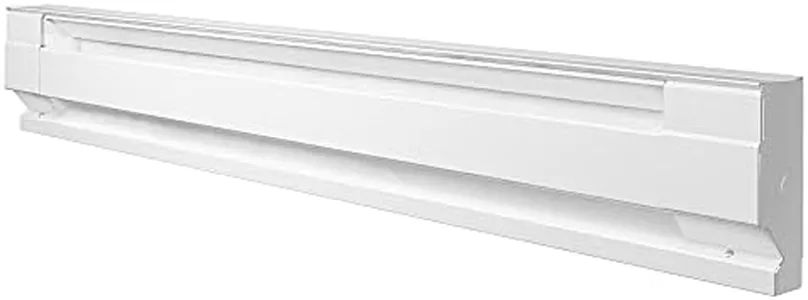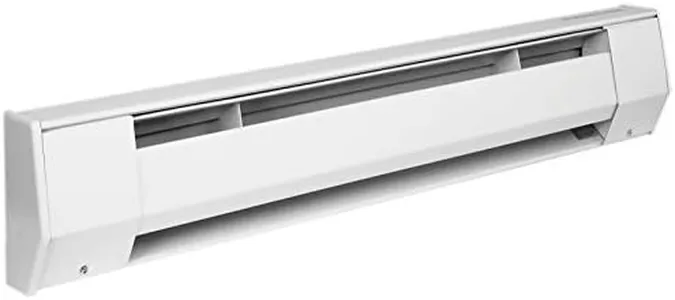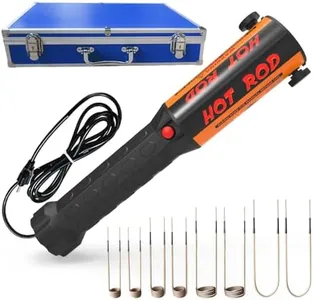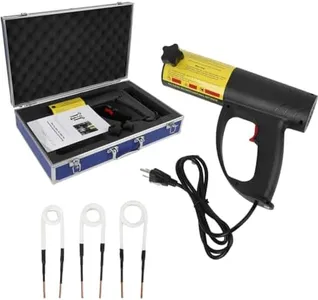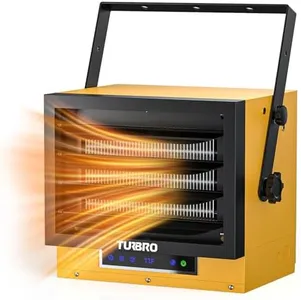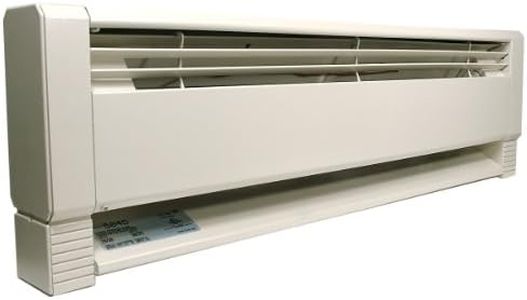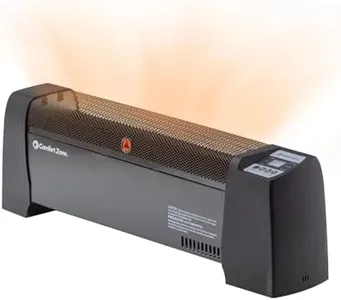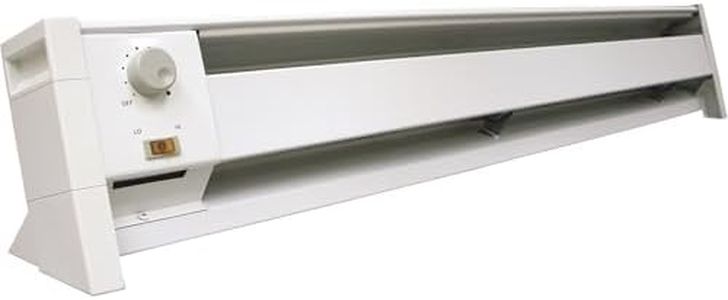10 Best Baseboard Heaters 2025 in the United States
Our technology thoroughly searches through the online shopping world, reviewing hundreds of sites. We then process and analyze this information, updating in real-time to bring you the latest top-rated products. This way, you always get the best and most current options available.

Our Top Picks
Winner
Cadet F Series 48" Electric Baseboard Heater (Model: 4F1000W, Part: 09954 ), 3415/2560 BTU, 240/208 Volt, 1000/750 Watt, White
Most important from
1464 reviews
The Cadet F Series 48" Electric Baseboard Heater is a solid option for those looking to heat small to medium-sized indoor spaces effectively. With a wattage of 1000/750 Watts and the ability to operate on 240/208 Volts, this heater delivers impressive warmth, making it suitable for areas needing consistent heat. One of its main strengths is the ease of installation, featuring universal wiring and pre-punched knockouts that allow for simple floor or wall mount setups, which can save you time and money on installation.
Safety is another highlight, as this heater is equipped with a high-temperature safety shutoff feature designed to protect your home and family from overheating situations. The durability is also noteworthy, backed by a limited lifetime warranty, which suggests that the manufacturer is confident in its longevity.
While the heater is powerful, it does not come with a thermostat included, so you might need to purchase one separately to have complete control over the temperature. This could add to your initial investment. Additionally, as it is designed solely for indoor use, those looking for outdoor heating options will need to look elsewhere. If you need an efficient and safe heating solution for indoor spaces and don't mind the extra effort to obtain a compatible thermostat, the Cadet F Series Electric Baseboard Heater is a strong contender in the baseboard heater category.
Most important from
1464 reviews
King 5K1212BW 1250-Watt 120-Volt 5-Foot Baseboard Heater, Bright White
Most important from
362 reviews
The KING 5K1212BW K Series Baseboard Heater is designed to provide efficient heating for indoor spaces. With a wattage of 1250W at 120V, it’s powerful enough for smaller rooms, making it an excellent choice for residential heating needs. One of its standout features is the aluminum ribbon fin element, which helps distribute heat evenly and quickly, ensuring a warm environment without long wait times. The natural convection heat design contributes to a comfortable atmosphere without the noise associated with some heating systems.
Safety is a priority with this model, as it includes a full-length safety cutout and a crushproof element, minimizing the risk of overheating or damage. The dent-resistant die-form cover adds durability, making it suitable for areas with heavier foot traffic. Plus, being made in the USA adds a level of quality assurance to the product.
This heater is not a plug-in model, meaning it requires hard-wiring, which might not be ideal for renters or those who prefer a simple setup. Additionally, its dimensions can be a bit misleading as it’s listed as 1” x 1” x 1” but is actually a long baseboard unit. Users seeking a compact or portable heating solution may find this design less convenient.
Most important from
362 reviews
Qmark CWH3404F WALL HEATERS, White
The QMark CWH3404F Electric Wall Heater is a versatile heating solution designed for both home and commercial use. With a powerful 4000 watt output and 240 volt requirement, it can effectively heat a substantial area. Its commercial grade steel construction ensures durability, making it suitable for long-term use in various settings. The dimensions (15.75 inches long, 5 inches wide, and 19.31 inches high) make it a compact option that can be easily wall-mounted, saving floor space.
Additionally, the fan-only option allows for circulation of cool air during warmer months, adding to its versatility. Safety is a notable feature, with a manual reset thermal overheat protector that disconnects power in case of accidental blockage, providing peace of mind. The permanently lubricated fan motor reduces the need for maintenance, contributing to the heater’s longevity. However, the product does not include a thermostat, which might require an additional purchase for precise temperature control.
Weighing 21.5 pounds, it is manageable but may require assistance during installation. This heater is ideal for those looking for a reliable, powerful, and space-saving heating option with built-in safety features for both residential and commercial environments.
Buying Guide for the Best Baseboard Heaters
Baseboard heaters are a popular choice for home heating due to their simplicity, efficiency, and ease of installation. When choosing a baseboard heater, it's important to consider several key specifications to ensure you select the right model for your needs. Understanding these specifications will help you make an informed decision and ensure your home stays warm and comfortable during the colder months.FAQ
Most Popular Categories Right Now
